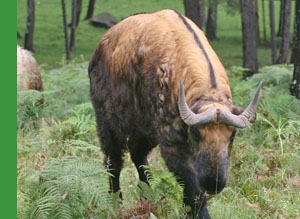- Series:Animals, Transcript English
Proverbs 3:5-6
“Trust in the LORD with all thine heart; and lean not unto thine own understanding. In all thy ways acknowledge him, and he shall direct thy paths.”
In has a bulky, humped body like a bear. Its hindquarters slope downward like a hyena. It has legs like a cow. Its tail looks as if it were borrowed from a goat. It has the horns of a wildebeest and a face like a moose with mumps. Some scientists think the golden fleece Jason brought to Greece in classical times was from a takin. One scientist commented that if the camel was designed by committee, the same committee designed the takin from the parts that were left over.

Standing on their hind legs, takins can reach branches eight feet high. They will push over thin trees to get at the leaves. And they’re large enough to straddle a five-foot tree and bend it down until they can get at the leaves. Scientists were puzzled because for some time they never saw any young takins in the grazing herds. Then they discovered that the young are often tended in the takins’ version of a day care center, while the rest of the herd goes off to socialize and feed.
Our Creator’s imagination knows no limits. In its uniqueness, the takin glorifies our Creator God.
Prayer:
Father, Your unlimited imagination has done things that we cannot imagine or understand. Help me to remember this fact when I am tempted to trust in those things that my limited imagination can understand in place of Your clear Word of truth. In Jesus’ Name. Amen.
Notes:
Miller, Julie Ann. 1985. “Observations on a legend: takin in the wild.” Science News, v. 128, Aug. 31. p. 148.
